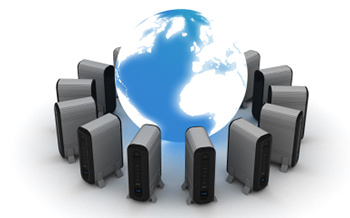Why some CIOs are walking, not running, to the cloud
July 31, 2018
Establish and nurture customer relationships with Microsoft Connections
August 6, 2018
The short answer to that question is nothing. In the New york time’s attack, the attackers changed the newspaper’s Domain Name System (DNS) records to send visitors to a Syrian website. The same type of thing can very well happen to your business website. For a clearer perspective, let’s get into the specifics of the attack and explain what DNS is.
The perpetrators of the New York Time’s attack targeted the site’s Internet DNS records. To better understand this, know that computers communicate in numbers, whereas we speak in letters. In order for us to have an easy-to-remember destination like nytimes.com, the IP address must be converted to that particular URL through DNS.
Therefore, no matter how big or small a company’s online presence is, every website is vulnerable to the same DNS hacking as the New York Time’s site. The good news is the websites of smaller companies or organizations fly under the radar and rarely targeted. Larger targets like the New York Times, or LinkedIn, which was recently redirected to a domain sales page, are more likely targets.
For now…
There is no reason to panic and prioritize securing DNS over other things right now. But there is a belief that DNS vulnerability will be something cybercriminals pick on more often down the road.
Here are a few ways to stay safe
Select a Registrar with a Solid Reputation for Security
Chances are, you purchased your domain name through a reputable registrar like GoDaddy, Bluehost, 1&1, or Dreamhost. Obviously, you need to create a strong password for when you log into the registrar to manage your site’s files. Nonetheless, recent DNS attacks are concerning because they’re far more than the average password hack.
It was actually the security of the registrars themselves that was compromised in recent attacks. The attackers were basically able to change any DNS record in that registrar’s directory. What’s particularly frightening is the registrars attacked had solid reputations. The New York Time’s, along with sites like Twitter and the Huffington Post, is registered with Melbourne IT. LinkedIn, Craigslist and US Airways are registered with Network Solutions. Both had been believed to be secure.
So what else can be done?
Set Up a Registry Lock & Inquire About Other Optional Security
A registry lock makes it difficult for anyone to make even the most mundane changes to your registrar account without manual intervention by a staff registrar. This likely comes at an additional cost and not every domain registrar has it available.
Ask your registrar about registry locking and other additional security measures like two factor authentication, which requires another verifying factor in addition to your login and password, or IP address dependent logins, which limits access to your account from anywhere outside of one particular IP address.
While adding any of these extra safeguards will limit your ability to make easy account change or access your files from remote locations, it may be a worthwhile price to pay.
